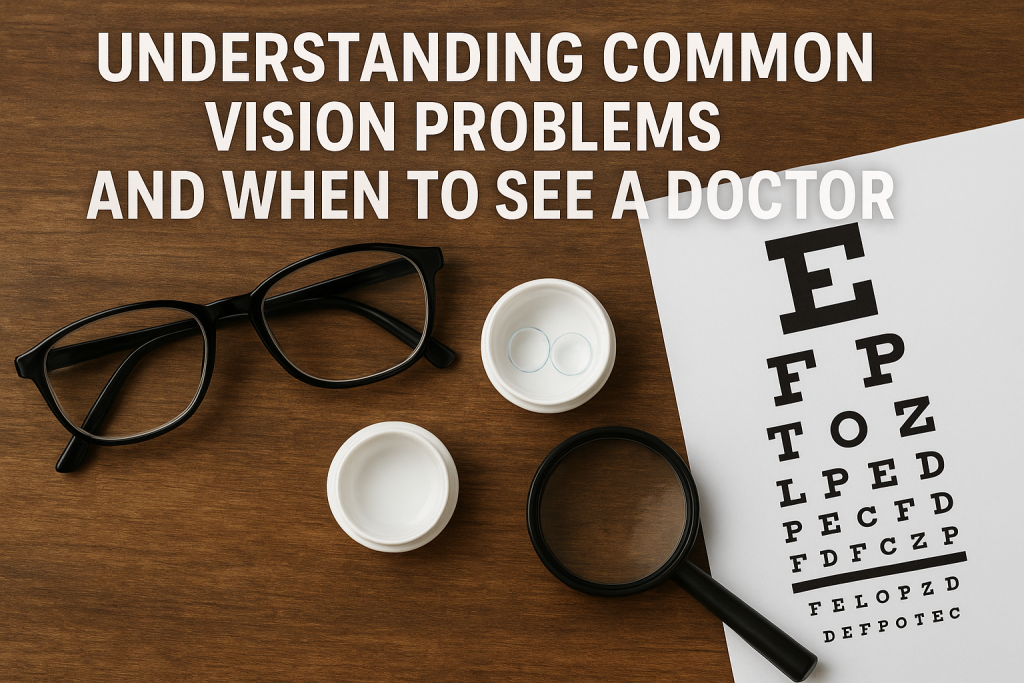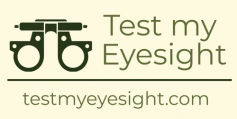
Our eyes are among the most vital organs in the body, yet many of us tend to take them for granted until problems arise. Vision issues are surprisingly common, and while some are minor, others can significantly affect quality of life if left untreated. The good news is that many eye problems are manageable, especially if detected early. Understanding the types of vision issues, their symptoms, and the importance of regular eye check-ups can go a long way in preserving healthy vision for years to come.
Refractive Errors: Myopia, Hyperopia, and Astigmatism
Refractive errors occur when the eye cannot bend light properly, causing blurred vision. The most common types include myopia, hyperopia, and astigmatism.
Myopia (Nearsightedness)
Myopia is a condition where distant objects appear blurry, while close objects can be seen clearly. It typically develops in childhood and can progress over time. Causes include a longer-than-normal eyeball or overly curved cornea, which prevents light from focusing correctly on the retina. Corrective measures like eyeglasses, contact lenses, or refractive surgery (such as LASIK) can help restore clear vision. Early detection is crucial, especially in children, as progressive myopia can lead to higher risks of retinal detachment or glaucoma later in life.
Hyperopia (Farsightedness)
In hyperopia, near objects appear blurry while distant objects remain clearer. This condition occurs when the eyeball is shorter than normal or the cornea has too little curvature. Children and young adults may compensate naturally, but as we age, hyperopia often becomes more noticeable. Corrective lenses or contact lenses can help focus light properly onto the retina, reducing eye strain and improving clarity.
Astigmatism
Astigmatism is caused by an irregularly shaped cornea or lens, leading to blurred or distorted vision at all distances. It can occur alongside myopia or hyperopia and may cause headaches or eye fatigue. Astigmatism can usually be corrected with specially designed glasses, toric contact lenses, or refractive surgery. Regular eye exams are essential, as undiagnosed astigmatism can affect reading, driving, and overall quality of life.
Age-Related Vision Changes: Presbyopia
Presbyopia is a natural, age-related condition that typically begins around the age of 40. The lens of the eye loses flexibility over time, making it difficult to focus on nearby objects, such as when reading small print or using a smartphone. Reading glasses, bifocals, or progressive lenses can effectively manage presbyopia, allowing adults to maintain comfortable near vision.
Serious Eye Conditions: Glaucoma, Cataracts, and Macular Degeneration
While refractive errors are common and easily corrected, some eye conditions require closer medical attention due to the potential for permanent vision loss.
Glaucoma
Glaucoma is often called the “silent thief of sight” because it can damage the optic nerve without obvious early symptoms. Increased pressure inside the eye is a common risk factor, but glaucoma can occur even with normal eye pressure. Early detection through regular eye exams is essential, as treatment — including prescription eye drops, laser therapy, or surgery — can slow or prevent vision loss.
Cataracts
Cataracts involve clouding of the eye’s natural lens, which can make vision blurry, dim, or hazy. Cataracts are typically age-related but can develop earlier due to injury, medication, or certain medical conditions like diabetes. Surgery to replace the clouded lens with an artificial one is highly effective and can restore clear vision.
Age-Related Macular Degeneration (AMD)
AMD affects the macula, the central part of the retina, leading to loss of central vision. It can make tasks like reading, driving, or recognizing faces challenging. While there is no cure for AMD, lifestyle changes, medications, and specialized treatments can slow progression and preserve vision. Early diagnosis is critical for maximizing treatment effectiveness.
Warning Signs You Shouldn’t Ignore
Even minor symptoms can indicate underlying eye problems. It’s important not to dismiss sudden changes in vision. Common warning signs include:
Blurry vision: Could indicate refractive errors or eye diseases.
Frequent headaches: Often caused by eye strain or uncorrected vision issues.
Flashes of light or floaters: May signal retinal issues, including retinal detachment.
Loss of peripheral vision: A potential early sign of glaucoma.
Difficulty seeing at night: Can indicate cataracts or other retinal problems.
Ignoring these symptoms can lead to delayed diagnosis and more serious complications. If you notice any of these changes, scheduling a comprehensive eye exam is essential.
The Importance of Regular Eye Exams
Routine eye exams are the cornerstone of early detection. Eye doctors can identify issues before they become serious and recommend interventions that preserve vision. Adults should generally have an eye exam every one to two years, while children and seniors may require more frequent check-ups. Eye exams are not just for checking vision clarity — they also screen for diseases like glaucoma, diabetic retinopathy, and macular degeneration, which may have no early symptoms.
During an eye exam, your optometrist or ophthalmologist can:
Measure visual acuity and refractive errors.
Check eye pressure to assess glaucoma risk.
Examine the retina, optic nerve, and lens for signs of disease.
Recommend lifestyle changes, corrective lenses, or treatment plans.
Prevention and Eye Health Tips
While some vision problems are genetic or age-related, there are steps you can take to support long-term eye health:
Protect your eyes from UV rays: Wear sunglasses with 100% UV protection.
Take regular screen breaks: Follow the 20-20-20 rule — every 20 minutes, look at something 20 feet away for 20 seconds.
Maintain a healthy diet: Nutrients like vitamin A, lutein, and omega-3 fatty acids support eye health.
Stay hydrated: Adequate water intake helps prevent dry eyes.
Exercise regularly: Physical activity improves blood flow, including circulation to the eyes.
Avoid smoking: Smoking increases the risk of AMD and cataracts.
Conclusion
Vision problems are more common than many people realize, but early detection can make a significant difference. From refractive errors like myopia, hyperopia, and astigmatism, to age-related changes like presbyopia, and more serious conditions such as glaucoma, cataracts, and macular degeneration, proactive care is key.
If your eyes send warning signals — whether it’s blurry vision, frequent headaches, or flashes of light — don’t delay seeking help. Regular eye exams, a healthy lifestyle, and prompt attention to symptoms are the best ways to preserve your vision. Remember, your eyes are invaluable, and taking steps to care for them today can protect your sight for years to come.
